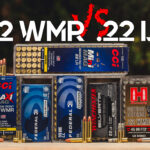
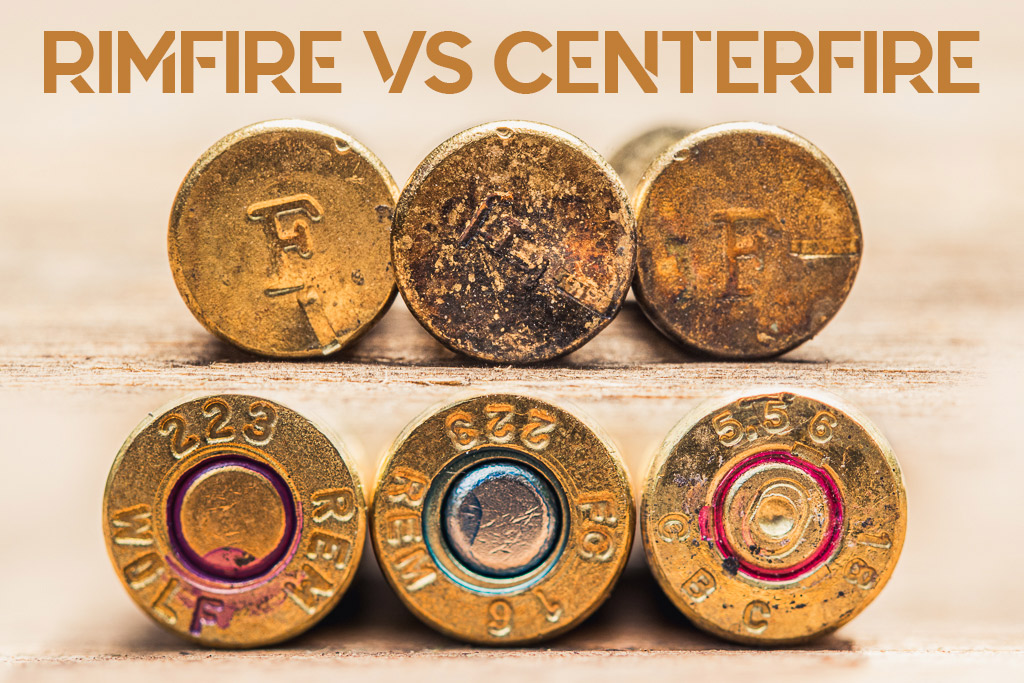
By Guy J. Sagi
The difference between rimfire and centerfire cartridges runs deeper than simply primer location, and some are subtle enough to have escaped the notice of even veteran shooters. The distinctions provide a glimpse into the materials and precise manufacturing hidden in the seemingly simple rounds and, ultimately, information to help new enthusiasts make better-educated choices.
Modern cartridges are simple and contain only four components; projectile (bullet), propellant (gunpowder), the metallic case that holds everything conveniently together, and a primer. A solid strike by the gun’s firing pin ignites the latter, which starts the powder burning. That burning powder produces hot gas. Then, once the increasing pressure rises enough to overcome the case’s grip on the projectile, the bullet launches down the barrel toward the target.
Primer Location
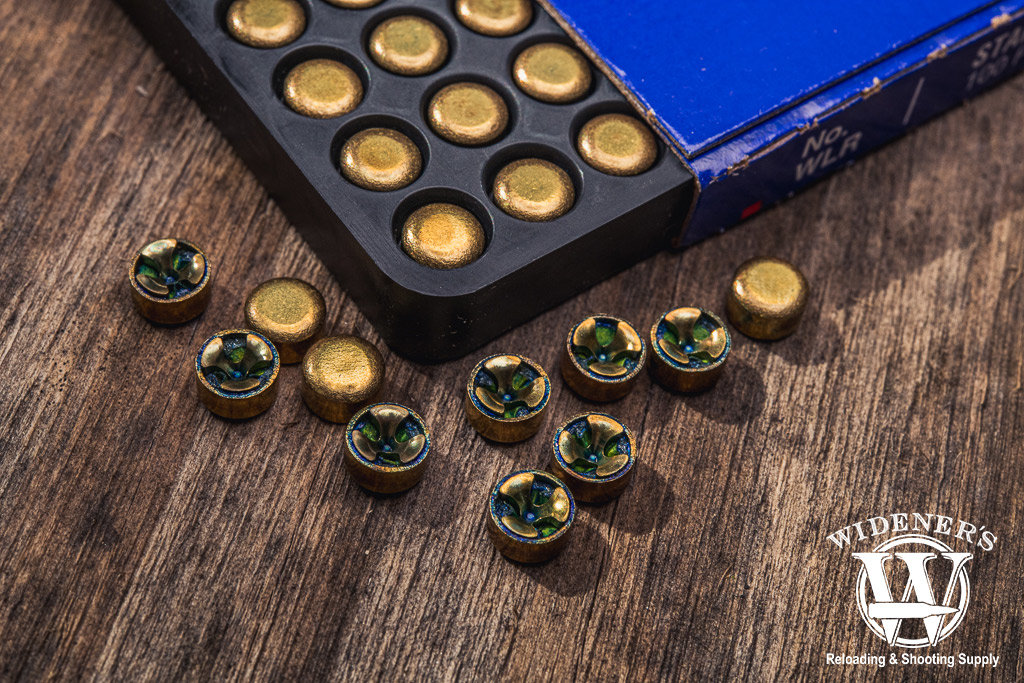
In a centerfire cartridge, the primer is a separate piece, centered in the bottom of the brass casing.
You’ll find the primer at the base of a cartridge. That’s the small flat side opposite the bullet. In centerfire ammunition it is located at the center of that circular area and with a rimfire it is in the outside circumference (rim).
It’s that simple. Keep in mind, however, you will not see any indication on the exterior of a rimfire that primer or priming compound is present. The base may be completely flat, or in some instances bear only a logo.
That’s because the compound that initiates the firing process for rimfires is inserted into the case during manufacturing, forced to the rim of the base—think back to high school chemistry centrifuges—and cured. Gunpowder and the bullet are added later.
Primers on a centerfire, however, are pressed into a hole (pocket) in the base. They’re visible to the naked eye and occasionally covered with a light splash of weather-resistant sealant. Once the cartridge has been shot, enthusiasts who reload punch out the spent primer in their process of making new ammunition. That’s not possible with rimfires.
Firearm firing pins are designed for either rimfire or centerfire ammunition, not both. It must strike the primer with great authority, in the proper location, to touch it off—a safety feature that acknowledges ammo is often dropped, jostled, and spilled.
Rimfire VS Centerfire: Ballistic Design & Performance
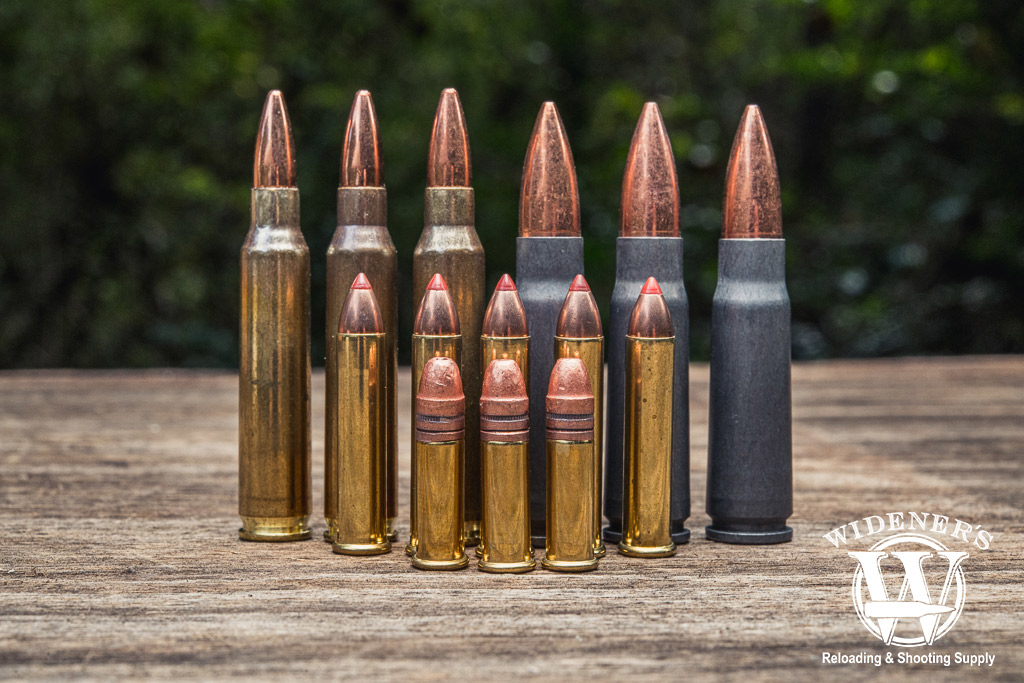
Rimfire: .22 LR (Front Row), 22 Magnum (Center Row). Centerfire: .223 Rem (Back Left), 7.62×39 (Back Right).
| Caliber | Bullet Type | Bullet Weight | Velocity (Muzzle) | Energy (Muzzle) |
|---|---|---|---|---|
| .22 LR | Full Metal Jacket (FMJ) | 40gr | 1,255 FPS | 140 FT LBS |
| .22 Magnum | Full Metal Jacket (FMJ) | 40gr | 1,800 FPS | 314 FT LBS |
| .223 Rem | Full Metal Jacket (FMJ) | 55gr | 3,240 FPS | 1,282 FT LBS |
| 7.62×39 | Full Metal Jacket (FMJ) | 124gr | 2,350 FPS | 1,520 FT LBS |
Louis Flobert invented the rimfire cartridge in 1845. It was the world’s first self-contained cartridge. The original designers meant for shooters to use it in parlor games. It contained no propellant. With only the primer driving the bullet, velocities were understandably low. Militaries quickly recognized the breakthrough’s advantages once gunpowder was added.
Centerfire: Reliable & Reloadable
Nearly three decades later centerfire arrived. The primer’s central location encourages gunpowder to ignite more evenly, resulting in more consistent bullet velocities and smaller average group sizes.
Perhaps the most significant advantage centerfire has, though, is the fact the rim on a rimfire must be bent sufficiently to activate the primer. That requires a thinner, more pliable metal, and puts a ceiling on the amount of pressure it can handle. Centerfires, on the other hand, can have their walls thickened and cases hardened, allowing the addition of more powder to handle bigger bullets and increase velocities.
Despite the drawbacks, militaries and westward-bound settlers employed a variety of rimfire cartridges during the Civil War era. Centerfire was the future, though, and things only got better as smokeless gunpowder slowly replaced black powder as propellant.
Centerfires get most of the publicity today. Handguns cartridges like the .38 Spl., .380 ACP, .357 Mag., .44 Mag., .40 S&W, .45 ACP, 9mm and others dominate the headlines. In rifles, there’s never a shortage of stories about .223 Rem, .243 Win., 5.56 NATO, .308 Win., 7 mm Rem. Mag., .338 Lapua Mag. and the latest new development. The opinion, for decades now, has been centerfire is the ideal option for self-defense, military use, hunting, target shooting, and competition.
Rimfire: Small But Mighty
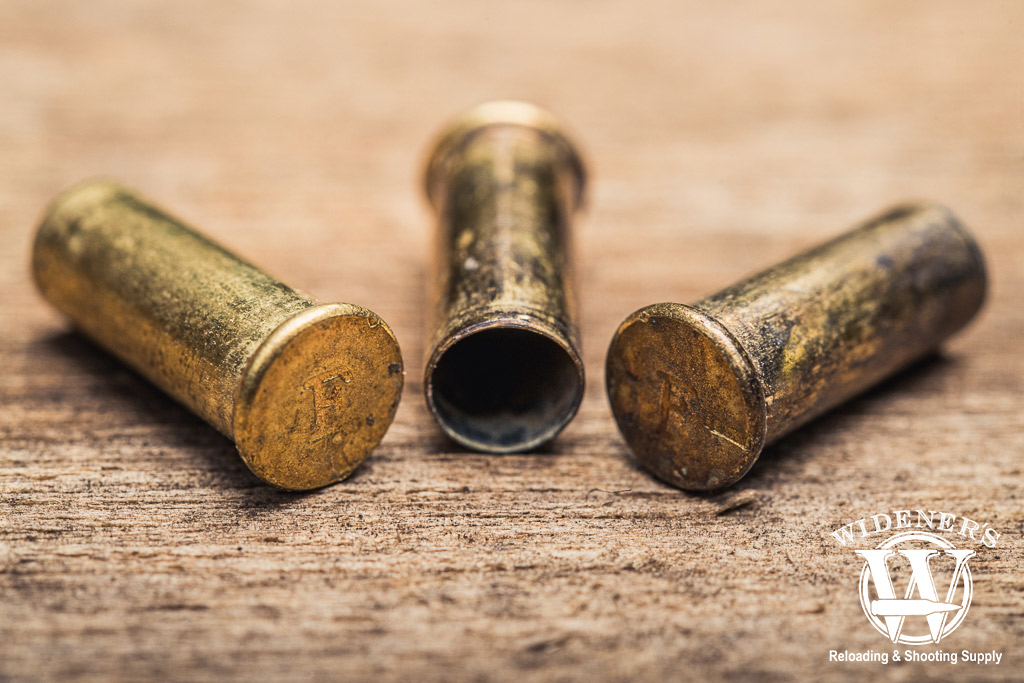
In a rimfire cartridge, the primer material is in the bottom of the casing. The firing pin strikes the rim of the casing causing the bullet to fire.
Despite that trend, the fact remains that rimfire is the ideal place for new shooters to learn marksmanship skills. Rimfire ammo typically costs less per round compared to centerfire. Generally, rimfire isn’t as powerful and doesn’t make shooters flinch quite as much with each trigger pull. Tens of thousands of longtime enthusiasts got behind the trigger of a rimfire .22 Long Rifle first, and still own at least one firearm they’ll never part within the chambering.
More shooters are using it for competition, thanks to a variety of relatively new events across the nation. The lightweight bullets may be more prone to wind’s fickle nature, but it’s a challenge many shooters enjoy.
There’s also a lot to be said for the versatility of the venerable rimfires in the .22 Long Rifle family. The relatively pale-powered .22 Short appeared in 1857, followed by the .22 Long in 1871. The 22 long rifle eclipsed both in performance and popularity when it debuted in 1887.
Some (not all) .22 Long Rifle chambered firearms eagerly digest two or even three of these cartridges. The lengthier version is the most popular alternative for plinking and small-game hunting, but the others shine brightly anytime pest and vermin control are required in areas where bullet containment is a concern. Subsonic loads are even available today to eliminate that loud and annoying crack produced when a projectile breaks the sound barrier. Add tiny little shotshell versions to handle snakes and there’s a lot to be for this rimfire family. The lesser known .22 Win. Auto (also rimfire) performs similarly to the .22 Long Rifle, although it will not run in the same guns.
Magnums & Modern

Who made who? The .22LR rimfire cartridge was designed in 1884, the centerfire was designed in 1829, however, the modern .223 Rem centerfire wasn’t designed until 1962.
Magnum versions of rimfires take performance up considerably. The .22 WMR (Winchester Magnum Rimfire), for example, launches 30- to 50-grain bullets at up to 2,000 feet per second (fps). The .22 Long Rifle pales by comparison, topping out at somewhere around 1,400 fps with 30 to 32 grains. It’s even common for self-defense experts to list the .22 WMR as a viable self-defense alternative.
Before 2002 rimfire cartridge technology was getting a little long in the tooth, but that changed when Hornady introduced the .17 HMR (Hornady Magnum Rimfire). Company engineers harnessed a variety of modern materials and managed to launch 20- to 25-grain, ballistically tuned bullets from test rifles at a scalding 3,000 fps with impressive accuracy.
The .17 WSM (Winchester Super Magnum) arrived 10 years later, launching a 20-grain bullet at 3,000 fps. It and the Hornady version, stretch effective rimfire distances further than ever before.
Despite the improvements, both remain true to the rimfire’s tradition of being soft-shooting cartridges. Speed, accuracy and budget-friendly price—if that doesn’t get your heart racing, nothing will.


